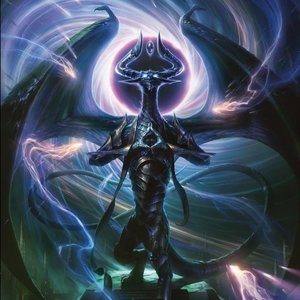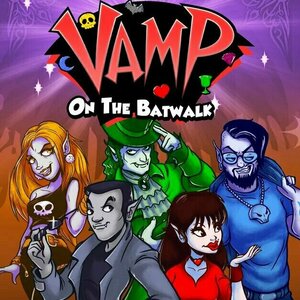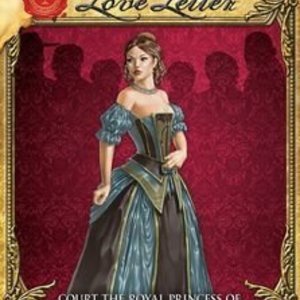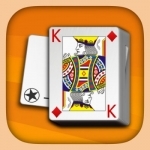
Canasta: Pro
Games and Entertainment
App
Advanced version of the popular Canasta card game also known as Argentine Rummy. Use of joker cards...
Ducklady (1174 KP) rated Magic The Gathering Arena in Video Games
Aug 26, 2019
The cards look great and it's fairly easy to get packs without having to pay real money. It also has a good amount of events on every week to earn rewards.
The problem is that it crashes a lot and disconnects. Kind of fed up of it just disconnecting and then missing my turn loads. Sick of having to restart it.
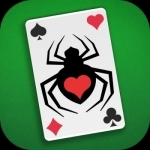
Spider Solitaire: Kingdom
Games and Entertainment
App
A Classic solitaire card game featuring the same addictive gameplay with a more stylish...

Imploding Kittens
Tabletop Game
Imploding Kittens is the first Expansion of Exploding Kittens, the award-winning card game that made...
Purple Phoenix Games (2266 KP) rated Vamp on the Batwalk in Tabletop Games
Feb 12, 2021
Vamp on the Batwalk has players take on the personalities of one of these fashionable elder vampires competing in the latest fashion show. The only problem is that vampires are unable to see themselves in mirrors, so they cannot really assure themselves that they look marvelous; the other vampires will have that privilege. Which vampire can win the most fashion shows this year with limited knowledge of how they look? Who would… stake… their reputation on mere fashion shows anyway?
DISCLAIMER: We were provided a copy of this game for the purposes of this review. This is a retail copy of the game, so what you see in these photos is exactly what would be received in your box. I do not intend to cover every single rule included in the rulebook, but will describe the overall game flow and major rule set so that our readers may get a sense of how the game plays. For more in depth rules, you may purchase a copy online or from your FLGS. -T
To setup invert the bottom of the box and insert it into the back of the box top lid to create a runway. A “batwalk,” if you will. Each player will choose a vampire and place their standee on the batwalk Start space. They will also take the matching Reference Card. All Vamp Cards matching the vamps in play are collected, shuffled together, and five are dealt to each player. Whichever player is most fashionable goes first and the game may begin!
Vamp on the Batwalk is a trick-taking game where players know not which cards they hold. Instead, their hands are facing all other players in order to suss out which cards they may be holding. The first player will open the game by playing any card from their hand. The next player also will play any card they wish, and so on until all players have played a card.
Once each card is played the “lead” card may be switched depending on the rules of the game. Should all cards played be of the same suit the highest card played is the lead card and wins the trick. Similarly, if the first card played remains the highest card in that suit and no other cards played earn the lead card status, that highest card wins the trick.
However, when a card is played that is the same value (a three played on a three of a different suit) the newest card with the matching value “Steals the Show” and becomes the new lead card. Some cards feature a star for the value. These star cards will always take the lead unless a garlic card has been played to trump the star. Garlic cards typically are the lowest-ranking suit, but when played in the same hand as a star become the trump suit.
Luckily, the reference cards have handy reminders for these special rules. After all cards from the hand have been played, players check who is winning the fashion show based on points earned during the round. If this is the end of the third round the vamp with the most points wins! If not, the player to the left of the most recent first player then becomes the first player for the next round.
Components. This game features an ingenious scoreboard that is just so fun to use. Having the box double as the scoreboard runway was such a great decision and it works flawlessly. The cards are all large tarot-sized (I think, I’m no tarot-master) and feature some really great art. The player standees are fine, but only four or so can actually fit on a space on the runway without creating a mess. All in all I adore the components and art style here.
Now, several games also employ this mechanic of holding your hand of cards outward for opponents to see, but here the players never really are told which cards they hold. In Vamp on the Batwalk the card play is silly and mostly a guessing game, at least in my head. One can never truly know all the cards they hold because each round not all cards are used. This adds another layer of difficulty in trying to guess what you are holding. This may turn off certain gamers, but it’s a silly way to play the game and I love it.
At the end of the day, this is a game about vampires putting on a fashion show. I feel like once I decided not to take it so seriously I began enjoying it so much more. Sometimes it’s a surprise to win a trick with a 2 of garlic. A throwaway card usually can win if a star is played. Or thinking you have THE card to win the trick only to have someone else Steal the Show and beat you out. It’s just chaotic silliness and I’m smitten.
If you are at all anything like me and can put aside the need to win at all times and at all costs, you will enjoy this one. It is wacky, has an amazing theme and excellent components, and is just a fun game to relax with or to help recharge after a brain burning sesh. Purple Phoenix Games gives this one a blood-slurping 8 / 12. Even though I think the blue vamp is eerily similar to Travis McElroy, the almost-coolest-Travis, this one is a hit for me. Go grab it if you like fun games that don’t tax the brain a whole lot.
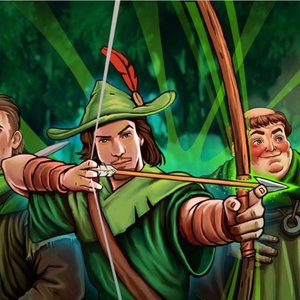
Robin Hood: Hero of the People
Tabletop Game
Play as Robin Hood and his merry men in this solo card game. As Robin Hood you’ll rob from the...
Peter Shephard (2822 KP) rated Love Letter in Tabletop Games
Jul 25, 2019
From the deck of cards, one is removed. Everyone is dealt a card. The first player draws a card, and plays a card, completing the action stated. The next player then does the same. Simple enough.
As there is only a finite amount of cards, and one has been removed, you never know exactly what is in play, or what is missing. You might have a Prince in you hand, but is another Prince about to be played, or has one been removed from the deck?
As I say, it is a very, very simple game, but also very enjoyable.
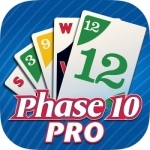
Phase 10 Pro - Play Your Friends!
Games and Entertainment
App
All new Phase 10, now with Multiplayer. The Phase 10 card game is now in the iTunes App Store! Play...
Purple Phoenix Games (2266 KP) rated Orbital Conflict in Tabletop Games
Sep 10, 2019
Orbital Conflict is a player versus player (PvP) card game in which the winner is the player showing the most VPs on their cards at game end. It is a game where placement of cards and orientation of cards is paramount in creating a space station that can dole out damage, take a ton of damage, or hybridizes offense and defense using resources granted from off-station investors.
DISCLAIMER: We were provided a copy of this game for the purposes of this review. These are final components, and the game is available from the publisher and other online retail stores. Also, I do not intend to explicitly cover every rule for the game, but to give an idea of game flow and play. -T
To setup the game (in this case a 1v1 head-to-head bout) shuffle all the cards with the white back together and deal each player a hand of five. Shuffle the smaller investor cards to form a draw pile. Give the starting player the Initiative card and you are ready to start!
The game follows a simple game flow following three phases per round: Draw, Main, Combat. During the Draw phase, the player with the Initiative card (I’ll call them the active player) will draw two cards from the white-backed deck (which I will just call cards). Then the other player will draw two cards as well. The active player then draws two investor cards for themselves and places them in front of their play area as possible investors to claim. The other player does the same. If there are any cards containing discard abilities that a player would like to play during the Draw phase, and the discard text reads they may do so during the Draw phase or any phase, they may play them and follow the discard instructions now.
Once done, the game moves on to the Main phase. During this phase the active player will play any cards they wish that are appropriate for this phase, and then the other player will do the same. During this phase players will be playing cards from hand (and as many as they would like) to add on to their space station, activate modules that were previously deactivated, claim investor cards, and prepare for the next game phase. Space stations can be added to via modules. Modules can be single cards, or multiple splayed cards. As you can see in the photo above cards have icons to the left of the white barrier and some will also have icons to the right. Depending on how a card is added to a module certain icons may be covered and therefore inactive. When adding a card to a module (called an extension) the player decides if they want to add the card to the right of the splay, thus covering up icons to the right of the barrier of the covered card, or under the stack to the left of the splay. Additionally, players may flip any card over to have the back showing, which will provide icons usable in a station module. There are restrictions for playing cards, but I will let you discover those on your own.
The game follows a simple game flow following three phases per round: Draw, Main, Combat. During the Draw phase, the player with the Initiative card (I’ll call them the active player) will draw two cards from the white-backed deck (which I will just call cards). Then the other player will draw two cards as well. The active player then draws two investor cards for themselves and places them in front of their play area as possible investors to claim. The other player does the same. If there are any cards containing discard abilities that a player would like to play during the Draw phase, and the discard text reads they may do so during the Draw phase or any phase, they may play them and follow the discard instructions now.
Once done, the game moves on to the Main phase. During this phase the active player will play any cards they wish that are appropriate for this phase, and then the other player will do the same. During this phase players will be playing cards from hand (and as many as they would like) to add on to their space station, activate modules that were previously deactivated, claim investor cards, and prepare for the next game phase. Space stations can be added to via modules. Modules can be single cards, or multiple splayed cards. As you can see in the photo above cards have icons to the left of the white barrier and some will also have icons to the right. Depending on how a card is added to a module certain icons may be covered and therefore inactive. When adding a card to a module (called an extension) the player decides if they want to add the card to the right of the splay, thus covering up icons to the right of the barrier of the covered card, or under the stack to the left of the splay. Additionally, players may flip any card over to have the back showing, which will provide icons usable in a station module. There are restrictions for playing cards, but I will let you discover those on your own.
Purple Phoenix Games (2266 KP) rated Hiding Hitler in Tabletop Games
Apr 6, 2021
Hiding Hitler is a hand management, take that card game for four to six players. In it, players are trying to end the game with either the Hitler card in their hand or the Death token in their possession. The game is played over a series of turns and ends once the final turn has been taken, following the draw of the final card from the draw deck.
DISCLAIMER: We were provided a prototype copy of this game for the purposes of this review. These are preview copy components, and I do not know for sure if the final components will be any different from these shown. Also, it is not my intention to detail every rule in the game, as there are just too many. You are invited to download the rulebook, back the game through the Kickstarter campaign, or through any retailers stocking it after fulfillment. -T
To setup, shuffle the deck of cards and deal six cards to each player. Set the draw deck in the middle of the table, along with the other components. The left of the deck is considered the “Graveyard” and the right side of the deck is the “Action Pile.” Depending on the game mode chosen to play, the Hitler card may be in one of the players’ hands (Blitzkrieg mode – faster because Hitler is already in one player’s hand) or possibly in the draw deck (Strategic mode – slower if Hitler starts in the draw deck). The first player is now able to begin taking their turn and the hunt (or hiding) of Hitler may begin!
On a turn a player may play any amount of Action, Attack, or Instant cards from their hand, resolved one at a time. Action cards are just that: cards that allow for some type of action, be it drawing more cards, or having the entire table draw more cards. Attacks are targeted at a specific player and that player will need to roll the die in order to achieve the Attack card’s victory condition. For example, the Attack card may instruct the attacked to roll higher than value 2 on the die. If they beat that number nothing happens. However, should they roll a 1 (or simply not meet the number on the card) the failing player will need to discard Hitler to the Graveyard if they have it, or discard any other card to the Action Pile. Finally, Instant cards can be played AT ANY TIME, even if not on the player’s turn. These can negate actions or modify die/roll results. Once a player has no more cards to play (or cards they wish to play), the turn ends by drawing one card from the draw deck. It is now the next player’s turn.
Play continues in this fashion of players taking turns playing cards from their hands to attack each other, bolster their hands, and affect each other in various ways until the last card is drawn from the deck. This signifies one final turn for all players. When the final turns are over the winning player is they who either have the Hitler card in hand, or was the last player to send Hitler to the Graveyard, thus collecting the Death token. This winner may now awkwardly congratulate themselves on winning a card game based on eliminating or Hiding Hitler. Yay?
Components. Again, this is a prototype version of the game, so the components may be different as a result of a successful Kickstarter campaign. That said, this game is a bunch of cards, a small die, and a plastic token with Hitler stickers. The cards are all fine, the die is a smaller size than your typical RPG set, and the plastic standee token is fine as well. I do need to address the art style on the cards. It is quite cartoony and really isn’t my style, but for this type of game it works just fine. I am not really excited by it at all, but there is nothing gruesome or triggery in the artwork. FOR ME. I do not speak for everyone though, so if you have issues with it, you are more than entitled to your opinions.
It is difficult to review, or even play for that matter, a game with such an emotionally charged central character. However, this is meant to be a lighthearted card game with a wonky theme. And it most certainly is that. Players are playing as many cards as they dare trying to find out where that Hitler card is residing so they may Attack and send it to the Graveyard. This earns the Death token. But can you hold onto that token until the end of the game? Depending on how far through the deck the game currently is, other players still may have chances to bring the Hitler card back to life. When this happens that Death token is surrendered and available to be earned again. I like that. Now, obviously, the whole zombie thing is weird, but the game is weird in itself, so that fits. Want to throw some achievements into your game? See how many times a player can send Hitler to the Graveyard. You can do that, and it would be a fun way to spice up the game for everyone.
At the end of the day, again, this is a card game with a Hitler theme. In it, Hitler really doesn’t DO anything. He just hangs out in players’ hands, gets sent to the Graveyard, possibly is resurrected, and the cycle continues until the end of the game. The theme may be off-putting for some, but I have no problems with it after having played it several times now. I cannot stress this enough: if you or any of your playmates MAY be offended by the theme, please do not pull this out at game night. It works best with players who can see it and appreciate it for what it is.
Now that the disclaimers are hopefully done, I can explain what this reminds me of, and give you some thoughts. Have you played Munchkin before? You know the part of the game (which we lovingly refer to as “the second half”) where one player is on 9th level attempting to win the game and everyone is ganging up on them to prevent the victory? Hiding Hitler feels a little like that scenario, but throughout the entire game. So many cards can be played on one turn and some cards are played out of turn to increase or decrease the die rolls, and when all players know exactly who has Hitler and they gang up on that player, it’s just Munchkin all over. Now, I feel like here in Hiding Hitler it doesn’t seem to be SO hurtful toward other players as it is in Munchkin, but I get that same vibe. It should be restated that I like Munchkin, so comping this to that game doesn’t necessarily mean it is at all a bad thing. It just gives me that same feeling.
So if you are looking for a possibly quicker and smaller card game to replace your copy of Munchkin, then check out Hiding Hitler. Yes, this is SUPER niche with the gameplay and theme, but with the right crowd I do believe it would be a hit. It has its flaws, but does also offer a rewarding gaming experience that I think about for hours after the game is over. When games can create lasting fond memories of the experience, then it has graduated into a good game. And I think Hiding Hitler is a good game. If you like the sounds of this one, I invite you to consider backing it on Kickstarter when the campaign launches. Find some friends ahead of time that may be into the theme, or can look past it, and prepare them for what is about to come: a game about keeping Hitler safe. Or murdering him. Either way.
